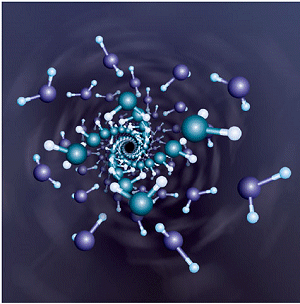Chapter 3
ASCE 7 section 12.3 and IBC section 1613.6.1
Flexible, Semirigid, or Rigid Determines...
- lateral force distribution to shearwalls
- wall-to-diaphragm anchorage forces
flexible
diaphragms are modeled as simple-span beams spanning between shearwalls
rigid
a torsional moment develops if centroid of applied lateral force does not coincide with shearwall center-of-resistance (center-of-rigidity)
similar to combined stresses
covered in textbook section 16.10
perform both flexible and rigid diaphragm analyses and design each element for the larger of the resulting forces
Strive for Structural Symmetry
avoid significant distances between center of mass and center of rigidity
...ice in the carbon nanotubes to pressures of 10 to 40,000 atmospheres...
At the highest pressures, we were surprised to find that the helix is the most stable formation of ice.
...the way that these ice structures assemble themselves somewhat resembles the assembly of certain proteins...
bone, muscle, annulus fibrosis
helicola by Robert Ginzburg
periodic table: 1, 2




